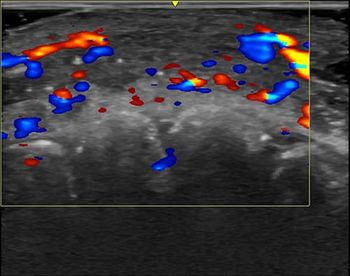
The last word on PACS
Dr. Elmar Kotter Head, imaging information technology, Freibourg University Hospital, Germany The growing belief that PACS should not be an isolated information system, but has to be interconnected with other information systems, especially HIS and
Dr. Elmar Kotter
Head, imaging information technology, Freibourg University
Hospital, Germany
The growing belief that PACS should not be an isolated information system, but has to be interconnected with other information systems, especially HIS and the electronic patient record, is highly significant. Productivity gains are recognized as resulting mainly from systems that appear integrated from the user's viewpoint. For 2003, I hope that ongoing efforts of the Integrating the Healthcare Enterprise (IHE) initiative will continue to facilitate system interoperability.
Dr. Hanna Pohjonen
PACS consultant, HUSpacs project
Helsinki, Finland
RIS and PACS have fused to become a transparent and fully integrated imaging information system, improving functionality. With one mouse-click in the RIS work list, users can look at the corresponding images in PACS. Opening an image set in PACS will automatically open the RIS report editor. There are reduced interfacing costs, and patient information can be managed better. Common user management and user rights are possible, as is single sign-on.
Hopefully, the following will become more common in 2003: regional solutions (many hospitals under the same shared database); Web-based distribution of images, requests, and reports beyond organizational boundaries; security and privacy solutions, including strong authentication of professionals and privilege management; mobile PACS as a seamless part of PACS (i.e., mobile modalities, mobile reporting and requesting, mobile viewing of images in a secure way).
Prof. Walter Hruby
Chair of radiology
Danube Hospital, Vienna
PACS is no longer about just viewing stations and an archive. It has become a workflow engine with integrated RIS functionality and has opened up intra- and extramural communication. PACS is now a nationwide, patient-centered solution, dealing with large amounts of data from multislice CT, MRI, and flat-panel digital radiography examinations.
I hope 2003 will bring worldwide approval for implementing data reduction. New ways are necessary to handle the very high amount of data generated. Legal prerequisites for this have already been established in Austria. Rules to protect patient data, such as the digital signature, should become standardized internationally, but they must not prevent communication. Finally, I hope that ambitious technical developments will yield even more ergonomic user interfaces and be accompanied by adequate training programs.
Dr. Davide Caramella
Associate professor of radiology
University of Pisa, Italy
In archiving, technological advances in network performance, as well as capacity and speed of storage media, have made it nearly possible to meet the ideal requirements of most radiologists, who would like to have any image delivered to any workstation in no time at all. Older approaches based on hierarchical archiving strategies or prefetching are being replaced by the "everything online" concept in some cases. The big challenge will be ensuring that the integration of PACS within a hospital-wide information exchange develops further, with a special focus on protecting confidentiality and security of patient data.
Dr. Keith Foord
Consultant radiologist
Conquest Hospital, Hastings, U.K.
The coming of age of Web technology, decreasing hardware costs, availability of multiterabyte RAID, and the use of storage area networking have all conspired to make PACS generally more user-friendly and affordable. This is happening so quickly that PACS suppliers are running to catch up. In 2003, we shall start to see much wider use of image data transfer between local clinics, general hospitals, and specialist referral centers.
Dr. Raimund Vogl
Imaging information manager
Innsbruck Hospital, Austria
The major development is the growing awareness that digital image archiving is not only a radiology business, but is the image part of the electronic patient record. Integration of PACS with the HIS and of departments outside radiology is now the focus, rather than PACS/RIS integration. Many of the new PACS efforts are driven by hospital administration and IT rather than radiology, with a focus on comprehensive image management. I hope that these "avant garde" ideas will find fertile ground in 2003 to produce exciting success stories of improved patient care and more effective workflow, through comprehensive and rapid availability of patient-related information.
Newsletter
Stay at the forefront of radiology with the Diagnostic Imaging newsletter, delivering the latest news, clinical insights, and imaging advancements for today’s radiologists.




























